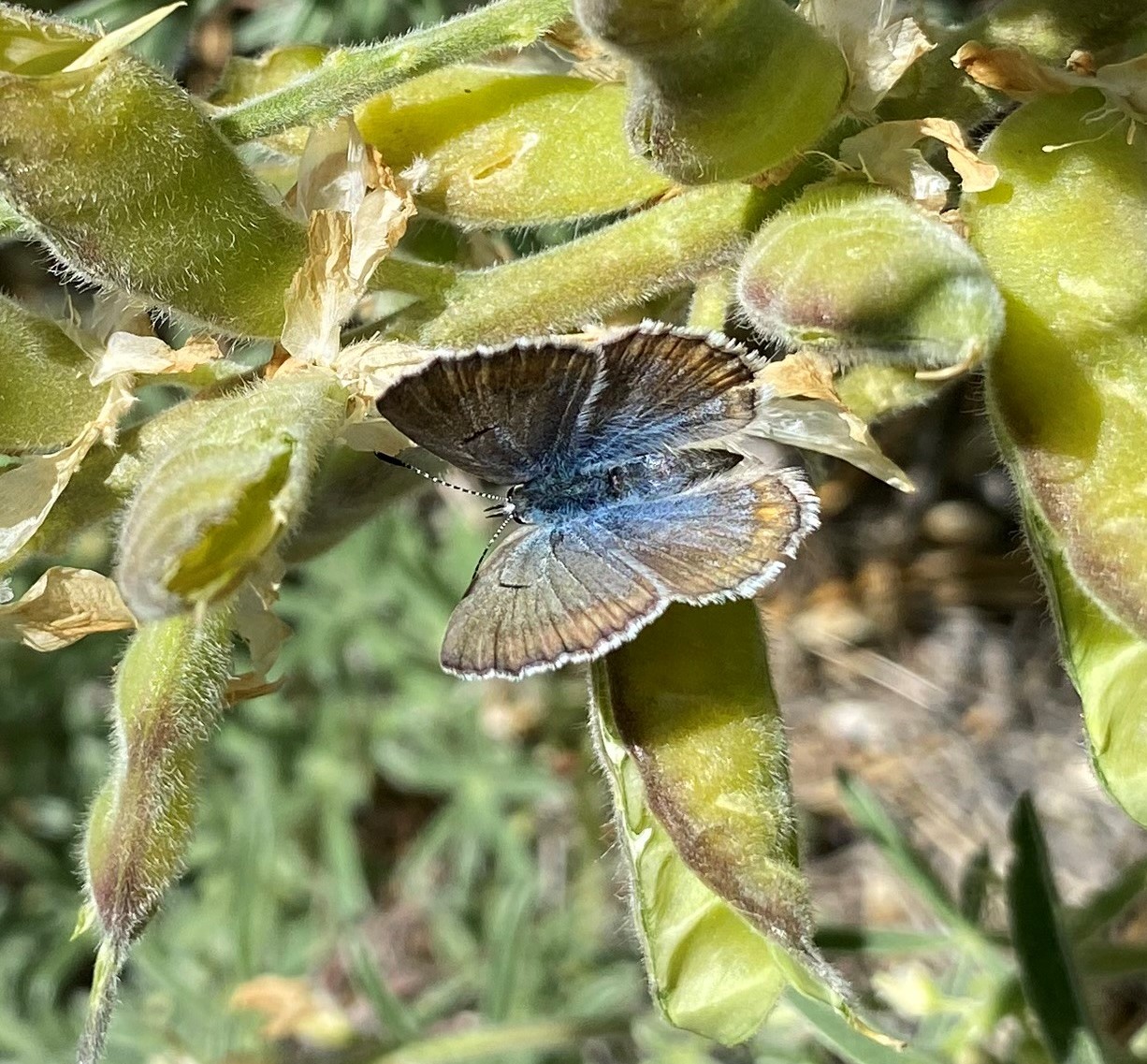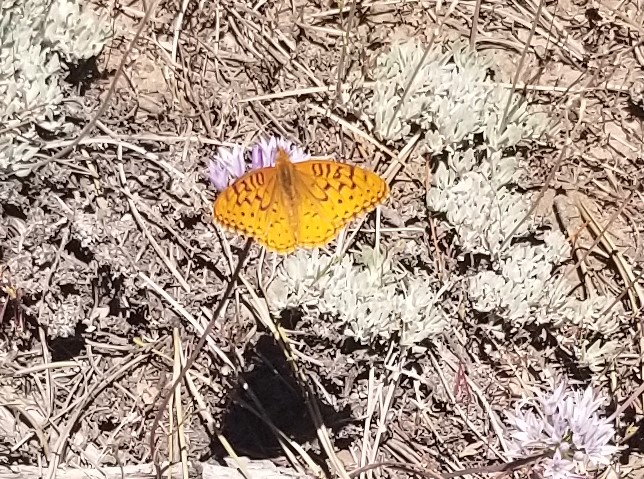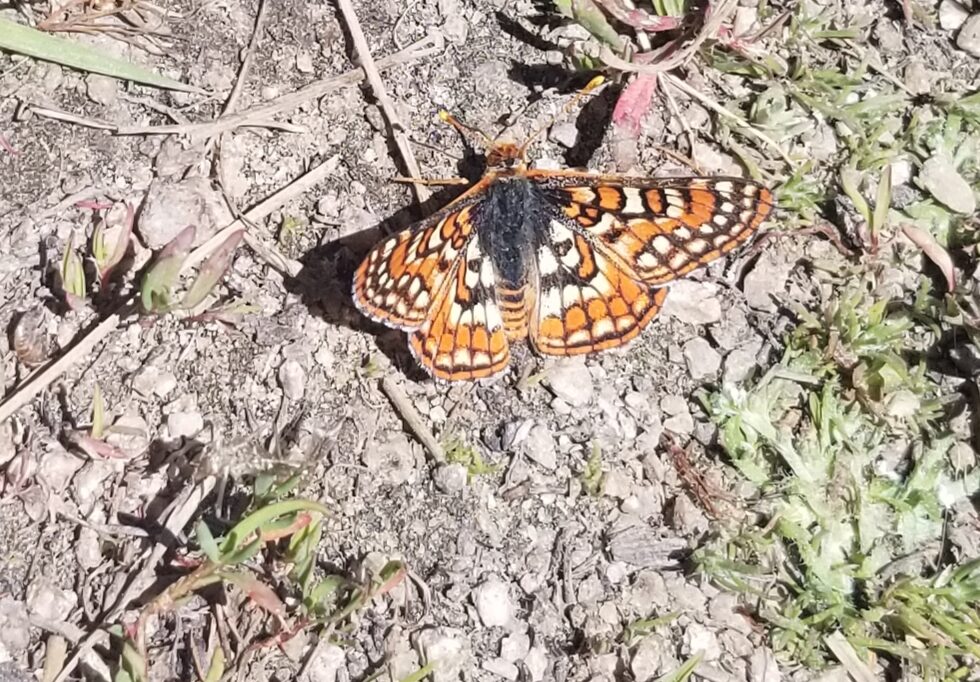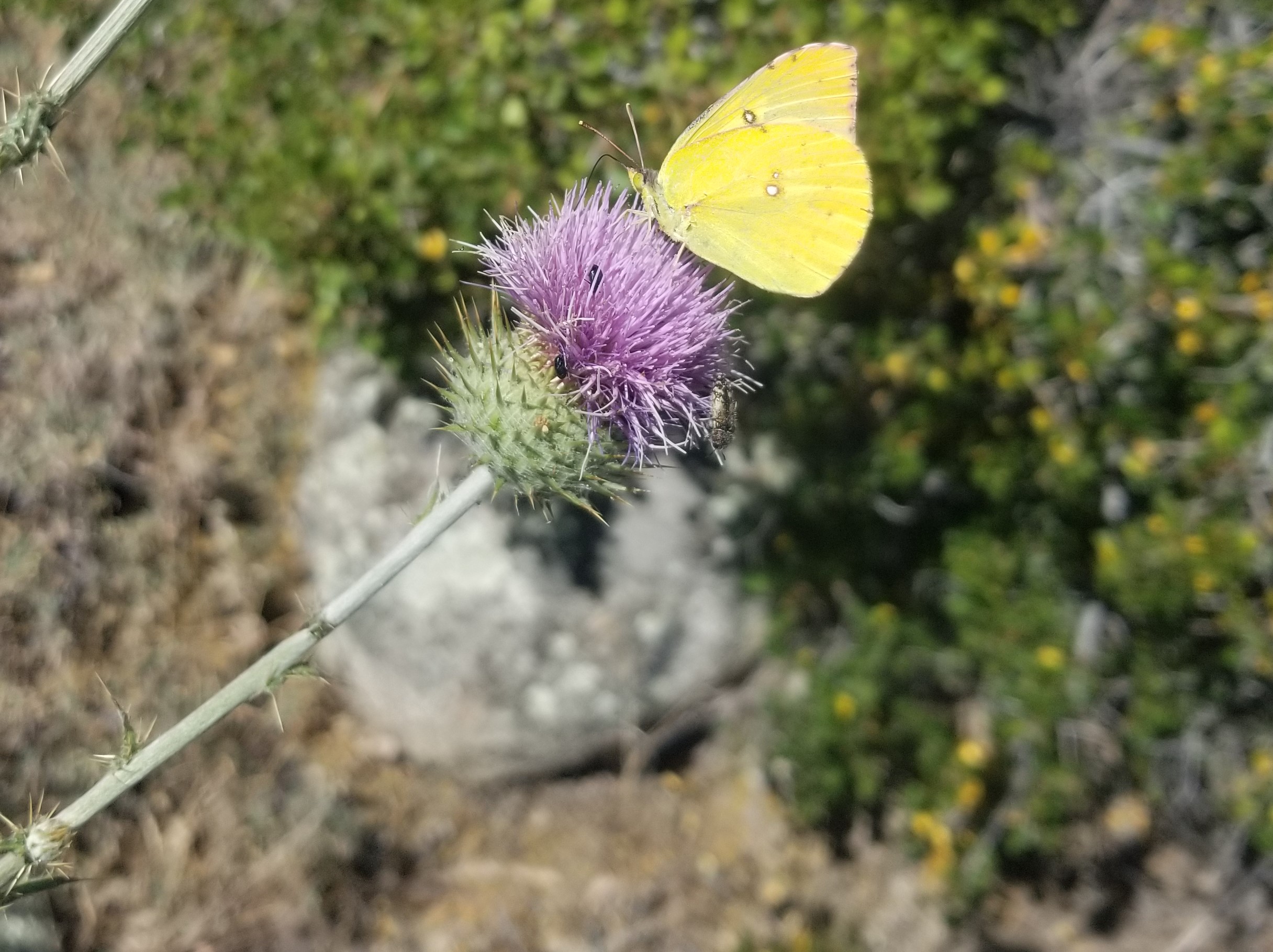The mornings are early, the dawn quiet but as we rode along in the forest vehicles to the monitoring site of the day the world was beginning to awaken around us. After a bumpy ride through the rough and swirly roads we arrived at the area we would survey for the day, littered with fields of lavender Phacelia exilis, bright yellow Castilleja lasiorhyncha, and deep violet Erythranthe purpurea that shimmered like scattered rubies across the forest floor. For the next couple of weeks, I accompanied a team of botanists and botany technicians to do rare plant surveys in this dazzling area, Holcomb Valley in North Big Bear. The goal of the day relatively simple, map out the boundaries of these rare plant species to understand both the size of the various populations but also to the extent of their range in the area. These polygons formed by the team in the future being used to inform firefighters on where fire retardant should not be sprayed due to the sensitive nature of the species.
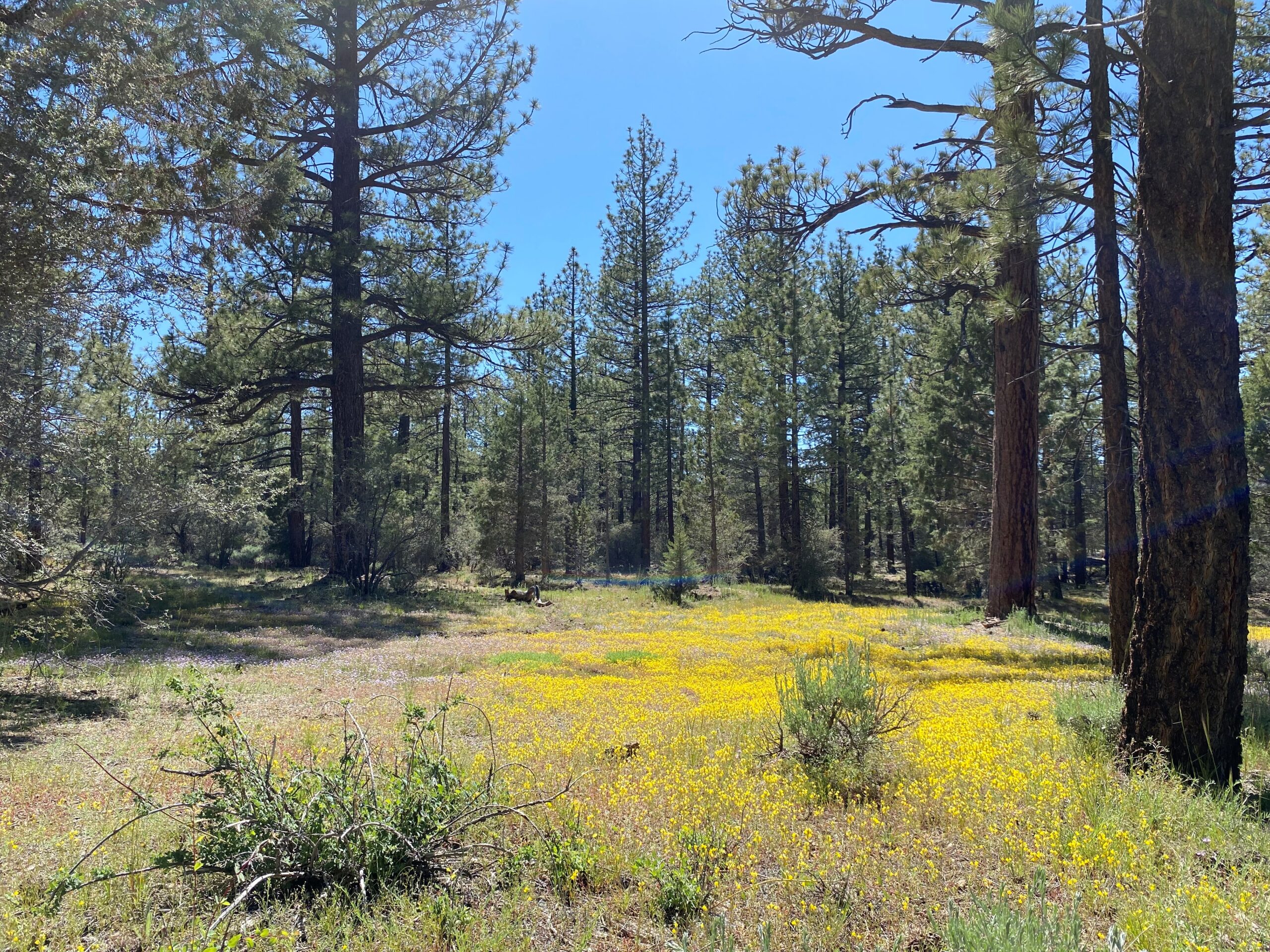
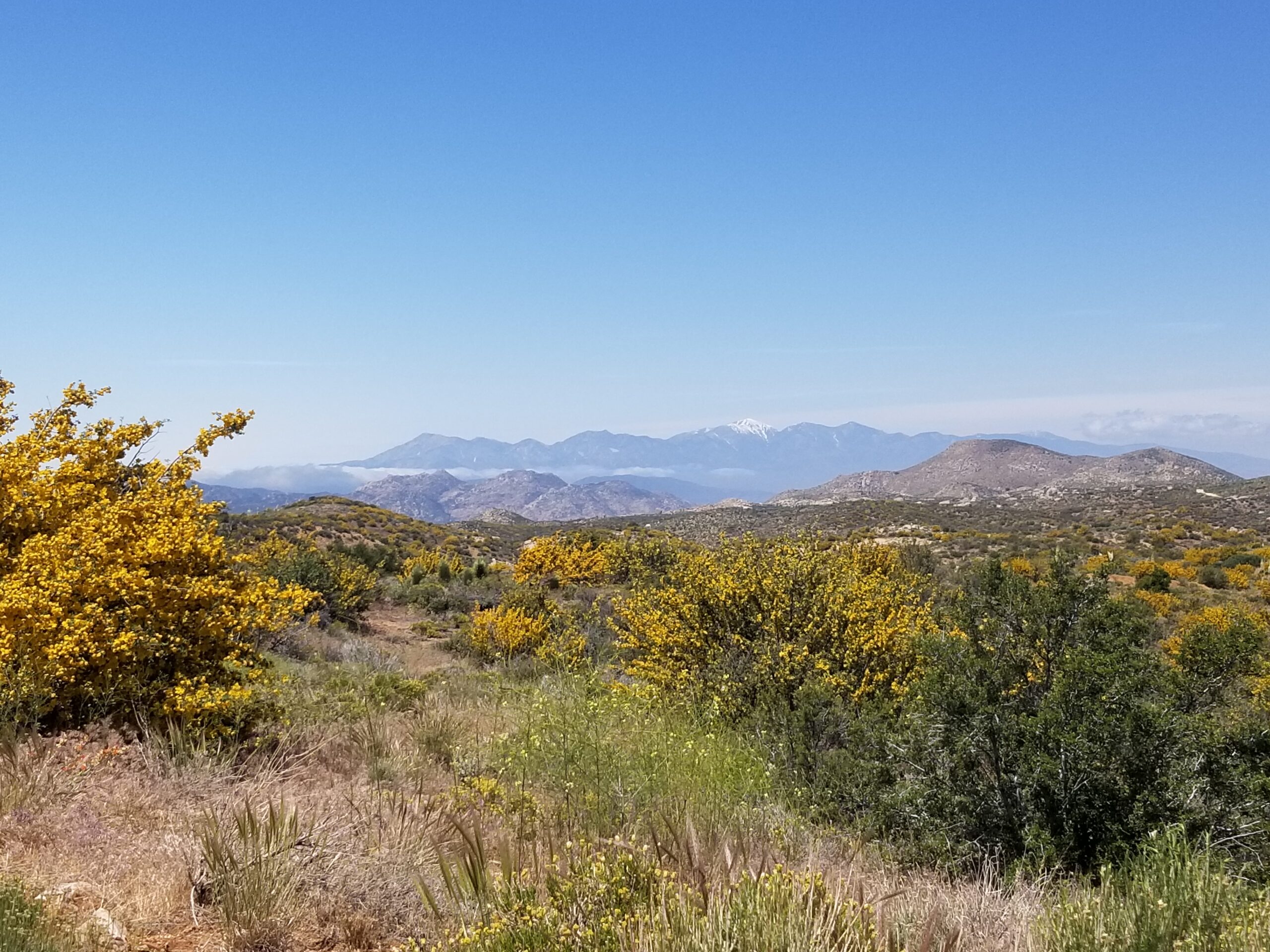
I spent much of my time with Katie, a Botany Field Assistant who would teach me the ropes on how to work the tablets in putting down points while also some tricks on ensuring the data collected best represented each population minimizing human error. I also spent time with Joseph a Biological Science Technician with a focus in Botany who was especially knowledgeable in teaching us about the native flora in the area and the minute details that separated one species from another. We focused our sight on P.exilis populations and as we entered the forest I searched for these rare purple flowers with translucent like petals. As I followed Katie, she described the area in more depth telling me that this species was a perennial that enjoyed moist soil and was often found at drainage sites, she explained how different soil types and terrain gives us clues on where to set our eyes on and what trail to follow when mapping a species. I will admit I had some difficulty in this at first as I would have trouble deciding where to start when overlooking a population. Some species seemed to stretch out for miles and as we marched through the thick underbrush and over fallen logs, I called out hesitantly on the finding of P.exilis as Katie quickly followed behind me. As the days went by though I became more confident in not only my sighting skills but also in understanding the polygons on the iPad and where to go to not overlap previous surveys on the same species in the past. However, as we trudged through the forest, I couldn’t ignore the fluttering of butterflies that surrounded me, each very different from the other. Their bright colors and elaborate patterns intrigued me not only for their beauty but for why they evolved to take on that image. There seemingly paper like fragile wings propelling them powerfully up and across the meadows searching for nectar upon the flowers found throughout. In some instances, I became sidetracked as I chased after a few, attempting to take a quick picture in vain. This interest quickly bled into other sites I visited when doing surveys or monitoring plant populations, I became engrossed in gaining information on the pollinators that so closely interacted with the plants we were watching. After a few days of assisting in mapping North Big Bear I could no longer ignore these ornate gems and at lunch breaks I began to take pictures of them to capture their beauty. After the end of the day, we would return to the office, and I attempted (with some luck) to identify the species through both wing patterns and associated plant species interactions.
On our expeditions thereafter I began to record the flowers I saw the butterflies landing upon and the time of day I spotted a certain group appearing the most. While our main goal was on rare plant surveys, I developed a small side project on these trips in learning more about the native butterflies in this area and their connection to the plant species they so loved. As I stood in the field of flowers found in Holcomb Valley, I was mesmerized by the beauty that surrounded me and felt an increased love for the work I was doing. As the shades of purple, yellow, and violet faded towards the end of our surveys due to the oncoming summer heat, the butterflies remained, moving works of art dancing in the morning light.
